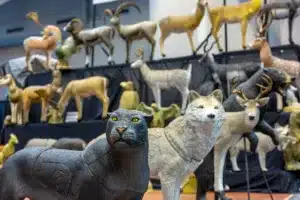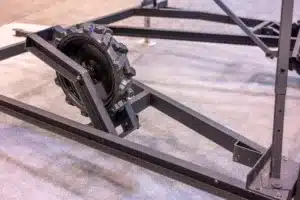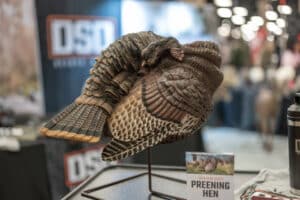No products in the cart.

365 Archery 3D Archery Targets
When folks enter a new industry, or even a new subsection of their industry, they usually dip their toe in by offering one or two

Part Two: Topography Maps
Aerial Photos are great for visually seeing what the habitat and surrounds look like on a new piece of ground your are thinking about hunting. But when it comes to finding those key terrain features that whitetails tend to travel, Topography maps are the answer. We will cover my top three features that I look for on any topo map, which are: Benches, Flats, and Saddles.
Let us dig a little deeper into the feature of a BENCH. What I classify as a Bench is that area on a map that you see a greater distance between elevation changes on a hillside. Making this an area where the elevation change has been spread out over a greater distance and in turn made a eaiser path of travel. A lot of times these benches will be 
Next up we have a hilltop FLAT. These flats are normally found at the end of a ridge top and often times have a very extreme elevation change at their very tip, making for an excellent barrier to prevent deer from traveling. Flats are easily seen in most areas with rolling hills to steep mountain terrain Locate them by following a ridge top out until it has reached an area on the map that the elevation lines seem to have stopped for a 
The two features mentioned above are great, but as always you save the best for last. The number one feature I look for when hunting a new piece of ground are SADDLES. Over the years most of my success in bow hunting has come from locating and hunting saddles. 
I really hope you take the time to study these two articles, more especially the photos indicating what features to look for on both aerial and topo maps. Because once you add these two weapons to your arsenal, hunting new ground will become more enjoyable and get you out into areas you may have never gone before. But remember, it is still hunting and with out time, patients and a whole lot of luck the elusive whitetail may still elude you.
Be sure to check out at www.selfilmed.com and LIKE us on Facebook at SELFILMED.

When folks enter a new industry, or even a new subsection of their industry, they usually dip their toe in by offering one or two

Highlights of Greylight’s new releases for 2024 – the Daybreak Blind, Transformer Tower, and Nomad trailer.

With one of their coolest decoys to date, the NWTF floor was buzzing with talk of the new DSD Preening Hen decoy. It’s almost TOO
Don’t miss a thing! Subscribe below to keep informed on everything that’s happening with the folks at SELFILMED.com